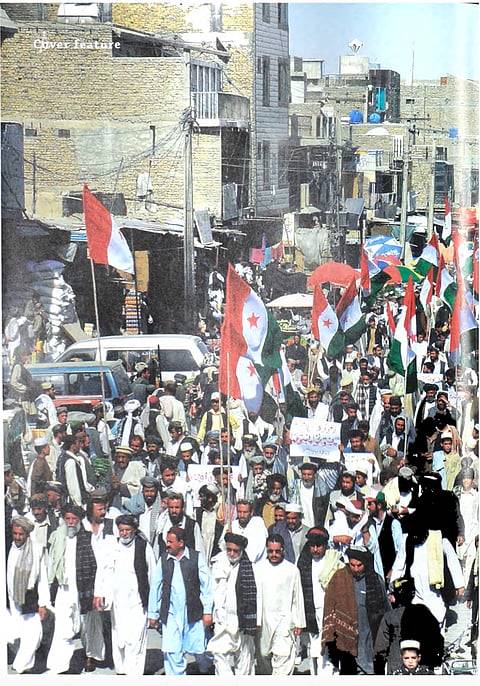The question of Balochistan
If you see the flag of Pakistan in Balochistan, you are either on the Balochistan University campus in Quetta or at the provincial assembly – or, more alarmingly, within metres of a checkpost manned by the Frontier Corps (FC), the paramilitary force that controls the province. Nowhere else in this, the country's largest province by area, will you see the national flag. On the contrary, flags of Azad Balochistan are a dime a dozen, adorning shops, houses, streetlights and random poles. Schools in the province – even those administered by the government – start their day not with 'Pak ser zameen' (the national anthem), but with 'Ma chukki Balochani', the anthem of Azad Balochistan. Here, the Pakistani state, army and paramilitary forces are figures of hate, while the sarmachar (Baloch 'freedom fighters') are considered heroes.
To get to such a point, the relationship between the Baloch and the state has been mouldering since Independence. The manner in which, for instance, the province was used for the nuclear tests of 1998, and then left to deal with the fallout, is perhaps indicative of the way the Baloch have been treated by the state for the past 63 years. The nuclear tests of 28 May 1998 hold a special place in both the state's narrative of victory and in the minds of many Pakistani citizens. While the latter are generally aware that the tests were conducted in the mountains of Chaghai District of Balochistan, very few know about the aftermath of these blasts for the residents of Chaghai, where nuclear fallout has since contaminated groundwater and wreaked havoc on agriculture. This has given rise to a host of diseases and deformed births – phenomena that are often referred to simply as 'mysterious illnesses of Balochistan' and brushed under the carpet.

